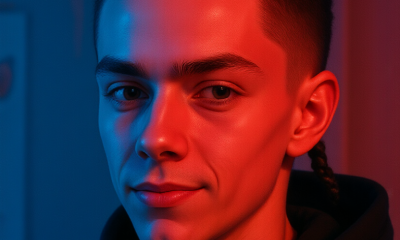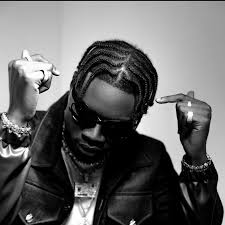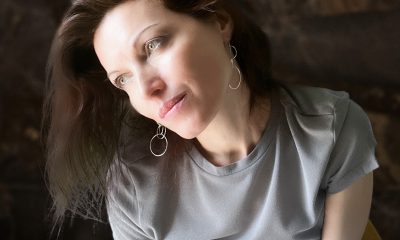Music
‘The Last Waltz’ Is The Best Thanksgiving Movie Ever Made
As immortalized by Martin Scorsese, The Band’s farewell concert embodies everything great and troubling about Thanksgiving. …


(Editor’s note: This piece was originally published in 2016. We republishing it today to commemorate Thanksgiving.)
The Last Waltz is a concert film directed by Martin Scorsese about a star-studded “retirement” show by The Band that occurred 40 years ago on Thanksgiving day in San Francisco. The co-stars are Bob Dylan, Van Morrison, Neil Young, Joni Mitchell, Muddy Waters, Dr. John, Neil Diamond, and about another half-dozen rock stars from the ’60s and ’70s. Every year around this time, I try to watch The Last Waltz at least once, in the way that people watch A Christmas Story or It’s a Wonderful Life whenever mid-December rolls around. I’ve come to regard The Last Waltz — and I preface this by offering sincere apologies to Planes, Trains, and Automobiles — as the greatest Thanksgiving movie ever. That’s not simply because The Last Waltz takes place on the holiday, but also because this film embodies what’s wonderful, horrible, hilarious, and moving about one of this country’s most sacred annual traditions, and how many of us manage to survive it. Other films have used Thanksgiving as a backdrop. But to me, The Last Waltz is Thanksgiving.
Allow me to recount the plot of The Last Waltz: A dysfunctional family of five brothers has decided to stop living together. Before they split up, they invite a coterie of friends dressed in colorful suits and floppy hats over for a holiday celebration. Despite years of pent-up resentment — the brother with the amazing voice loathes the brother with the amazing haircut, whom he views as disloyal and undermining — all parties agree to put these tensions aside and put on a good face in front of the guests.
The guest list at this party is truly a mixed bag. There is a wise old man from Mississippi. There is a beautiful blonde poet from the Hollywood hills. There is a jive-talking hipster from New Orleans. There is a coked-up Canadian hippie. There is a portly, purple-suited Irishman who mistakenly believes that he knows karate. And then there’s the Jewish rock star for Minnesota who can’t decide if he really wants to be there.
Thus far, it sounds like I’m describing a Wes Anderson film. And, in some ways, I am — beneath the formalism of the filmmaking is a whole lot of messiness.
On the surface, the party is lavish — there are chandeliers on loan from Gone with the Wind (really!) and the lighting is bold and theatrical and there are famous writers reciting indecipherable passages from Chaucer. Beyond the pomp and circumstance, however, it’s like the bowery. Nearly everyone is sneaking away to get smashed on booze and smuggled chemicals — this is out of habit, but also because family reunions tend to be fraught with tension. It is the most certain of all inalienable truths. The trio of sweet, soft-spoken brothers know that the brother with the amazing haircut will be overbearing and arrogant, and that the brother with the amazing voice will make his stirring but problematic case sympathizing with Southerners who lost the Civil War. And the sweet, soft-spoken ones will once again be caught hopelessly in the middle. You feel for them. Weird politics and flawed family dynamics – who can’t relate to dreading these things at this time of the year?
And yet — in spite of the resentments, and the betrayals, and the intensifying intoxication — everyone is able to come together and conjure a feeling of community. When they gather around to tell old family stories that have been told and re-told umpteen times — like the one about Jack Ruby, or the one about shoplifting bologna and cigarettes — the brothers pretend to laugh whenever the overbearing brother takes over the conversation. (The upside of being on stage is that you can turn off his microphone.) After a while, the laughs seem less forced. They’re faking it so well that they start to feel actual community and love and understanding. This is what The Last Waltz, and Thanksgiving, is all about.
Earlier this month, Robbie Robertson put out a memoir, Testimony, that concludes not long after The Last Waltz. (Condolences to anyone hoping for an in-depth, behind-the-scenes look at the making of 2011’s How To Become Clairvoyant.) My feelings about Testimony are as conflicted as they are about Robertson — he’s a great artist and an insufferable person, and Testimony similarly is artfully rendered and often hard to stomach.
As is my custom with rock memoirs, I’ve been reading Testimony out of order, in order to get to the parts that most interest me. The Last Waltz is near the top of that list. Robertson was the chief engineer of The Last Waltz — he conceived the concert, brought on Scorsese, and acted as the film’s producer. Unsurprisingly, his view of the concert is sanitized and romanticized — he goes into deep (perhaps unnecessary) detail about the conception and planning of the concert, recounting every personnel hire and rehearsal. Of course, every move is confirmation of Robertson’s genius.
For people that have seen The Last Waltz as many times as I have, Testimony will be interesting be default. Because I am one of those nerds who is curious about any and all minutia related to this concert, including what Van Morrison was wearing before the show. (“A beige trench coat,” Robertson writes, clearly less exciting than the extravagant purple jumpsuit he wore on stage.) For anyone else, however, Robertson might seem ponderous. He heaps praise upon the performers, particularly Neil Diamond, who in Robertson’s estimation performed “Dry Your Eyes” (which Robertson co-wrote) “like a sermon out of Elmer Gentry.” Robertson even spends a paragraph describing the Japanese bath in his San Francisco hotel room.
As for the other guys in The Band… well, Robertson admits that they weren’t as into the film as he was, but “they didn’t have the cinematic passion that I did.” Hm … sounds a little fishy, Robbie.
At that point, I decided it was best to chase what I was reading in Testimony with some passages from Levon Helm’s scathing 1993 book This Wheel’s On Fire, a dishier and more overtly nasty book than Testimony.
(Notice that I said “overtly” — Robertson isn’t above score settling, he just does it in a more magnanimous tone. For instance, when describing a disastrous 1970 gig at the Hollywood Bowl, Robertson hints that Helm’s heroin addiction adversely affected The Band’s performance, though he later diffuses the accusation by adding that Helm himself admitted as much after the show. Why Robertson chose to write about a forgotten concert — and throw Helm under the bus 46 years later — is a mystery. Though, perhaps, it does explain why he waited until after Helm died to write a book.)
In Testimony, Robertson claims that when he brought up the idea of a retirement concert to the guys in The Band, “no one was opposed to the idea.” Even Helm “knew we couldn’t continue with out live shows.” If Robertson really believes that, then I suggest that he read This Wheel’s On Fire. Helm’s take on The Last Waltz is unequivocal: “I didn’t want any part of it,” he writes. “I didn’t want to break up the band.”
In Helm’s version of events, Robertson pressed Helm about the dangers of the road, and how it took the lives of everyone from Hank Williams Sr. to Jimi Hendrix. “Every time I get on the plane I’m thinking about this stuff,” Helm recalls Robertson saying. “The whole thing just isn’t healthy anymore.”
“I’m not in it for my health,” Helm replies. “I’m a musician, and I wanna live the way I do.” (This quote later inspired the title of the heart-rending 2013 documentary, Ain’t in It for My Health: A Film about Levon Helm.)
Helm claims he only went along with The Last Waltz because management made it seem that he had no choice — whether that’s really true or if it speaks to the same self-defeating fatalism that caused Helm and the rest of the Band to slowly cede control to Robertson, it’s hard to say. Like so many families, the Band was undone by money problems. Robertson was credited as the Band’s primary songwriter, a distinction that Helm felt put too fine a point on the group’s collaborative process. At one time, these men freely pooled their talents and personal experiences for the common good. While Robertson technically wrote “The Night They Drove Old Dixie Down,” the song’s authenticity and soul came from Helm. But that partnership was over by the time of The Last Waltz.
In The Last Waltz, Robertson’s dark proclamations about “the road” form the narrative, while Helm’s contrasting view goes unacknowledged. This inevitably influenced Helm’s view of the film. When Helm finally saw The Last Waltz, he “was in shock over how bad the movie was,” he writes in This Wheel’s On Fire. Helm hated how many overdubs there were. (In Helm’s book, the Band’s producer John Simon claims that the only tracks that weren’t re-recorded were Helm’s vocals and drums.) Helm hated that Scorsese (whom he refers to, hilariously, as “the dummy”) didn’t shoot the dress rehearsal or any of the pre-show festivities orchestrated by concert promoter Bill Graham, which he felt were some of the best parts of the event.
Most of all, Helm despised Robertson’s “world-weary angst” about the life of touring musicians. In Helm’s view, this was like a gangster trying to leave the mafia. Ultimately, Helm felt that Robertson sold out his former comrades. “To me,” Helm concludes, “it was unforgivable.”
All of this stuff composes the poisonous subtext of The Last Waltz. Perhaps it’s easier to enjoy the movie if you aren’t aware of it. Or if you stick with Testimony and ignore This Wheel’s On Fire. But for me, the subtext actually deepens the experience of watching The Last Waltz.
I don’t think the movie would be as rich if it was simply about an old ’60s rock group that decided to hang it up. The tension between the joyous performances and the embittered back-stage reality is what gives The Last Waltz its emotional and spiritual power. If Helm really hated being there, then his ecstatic yodeling at the end of “Up On Cripple Creek” is all the more remarkable. If Rick Danko was already focused on his solo career — when Scorsese tries to interview him in The Last Waltz, Danko instead plays the luminous “Sip The Wine” from 1977’s Rick Danko — then his definitive performance of “It Makes No Difference” is that much more awe-inspiring. If Richard Manuel already seemed to be on his last legs, as both Robertson and Helm suggest in their books, the courageous grit he lends to “The Shape I’m In” is flat-out heroic.
(Garth Hudson is the only member of The Band I have not yet directly referenced. I am the one billionth person to make this mistake when talking about The Band, but only because he was seemingly unbothered by the humanoid craziness surrounding him in The Last Waltz. To quote Ronnie Hawkins, Hudson was werrrd, a musical genius living in his own solar system.)
Perhaps Helm’s point of view made it into The Last Waltz after all. No matter what Robertson says about the impossibility of road life, the rest of the guys refute by showing. These musicians are so devoted to their craft that they can perform masterfully, no matter the circumstances. They are weary men who find the wherewithal to transcend their weariness and approach grace.
This is what keeps me coming back to The Last Waltz every Thanksgiving. It affirms the faith in the power of ritual to heal — at least temporarily — whatever is awkward or unresolved or plain broken about your familial bonds. Sometimes, that belief is just enough to make things okay for a little while.
Artist Spotlight
Lana Crow turns challenges into a celebration with “Laugh With You”

“Laugh With You,” the latest single from Lana Crow, is a sincere rallying cry to embrace life in all its messy, beautiful mess. In the song, indie pop and alt-pop combine to deliver an emotional blow that feels both personal and universal.
“Laugh With You” feels like an instant connection, and Crow is telling you stories of hard times with a cozy, knowing smile. This song is as much about struggle as it is about how strong you are. It serves as a reminder that these struggles are simply what give us the strength to keep going, even when life is tough.
Crow encourages people to welcome them, create happiness in the cracks, and laugh even as the world gets heavy. The result is a song that delicately nudges you to love and embrace yourself. It is an anthem for anyone experiencing tough times who refuses to give up hope. Lana Crow continues to demonstrate her songwriting skills, both musically pleasing and emotionally rich, with “Laugh With You.”
It’s a reminder that it’s how we respond to tough times, rather than how they affect us, that’s key. With this song, not only does Crow provide us with music, but she also lets us know that sometimes a laugh is what we need to remember that there is always something to smile about and that, even when it feels like life has waged war against you, laughter can still be found.
Artist Spotlight
Lisa Boostani creates a mesmerizing tidal realm in “Ocean”

Lisa Boostani’s “Ocean” takes you deep into a sensory world where body, spirit, and myth come together, beyond the surface of genre. Boostani makes a soundscape that is both ethereal and deeply human by combining the broad essence of psychedelic pop with the strong appeal of alternative rock.
Her voice rises as if it is coming from deep within her, shaped by emotion rather than action. She intentionally channels the intangible, turning weakness into strength rather than a source of pain, and “Ocean” tells people to get involved in this inner world, not just watch it. This release is an integral part of her first EP, “One,” which will come out in March 2026 and is based on love, sensuality, and unity.
If “Ocean” is any indication, the EP will show sensuality not as something pretty, but as a kind of spiritual intelligence, a way to know yourself by connecting with others. The song’s textures and structure have an aquatic quality, moving between clarity and delirium, rhythm and freedom. Its emotional focus is on immersion instead of resolution.
The striking quality of “Ocean” is the blend of the mystical worlds. Boostani understands that strength often shows up as gentleness and that deep feelings are better expressed through frequencies than words. She wants people to see consciousness as immediacy, sensation as truth, and openness as an undeniable strength.
-

 Artist Spotlight4 days ago
Artist Spotlight4 days agoHope Easton channels tropical mischief and charm in new single “SexyReady”
-

 Artist Spotlight4 days ago
Artist Spotlight4 days agoSweetCandy! declares self-love and defiance on “UGLY”
-

 Artist Spotlight4 days ago
Artist Spotlight4 days agoBluntBrad Jr. finds calm ambition in the laid-back shine of “It’s All Good”
-

 Artist Spotlight4 days ago
Artist Spotlight4 days agoLavien drops a heartfelt Afrofusion plea that sticks to the soul with “Nobody”
-

 Artist Spotlight3 days ago
Artist Spotlight3 days agoLana Crow turns challenges into a celebration with “Laugh With You”
-

 Artist Spotlight5 days ago
Artist Spotlight5 days agoCircleKSK ignites an anime-metal collision on “UnBreakable Turn” ft. Anya J
-

 Artist Spotlight5 days ago
Artist Spotlight5 days agoRecc explores nostalgia and inner freedom in “Where the Wild thYngs Are”
-

 Artist Spotlight5 days ago
Artist Spotlight5 days agoAnnaBelle Swift delivers gentle hope and gratitude with new single “Heaven Sent”

